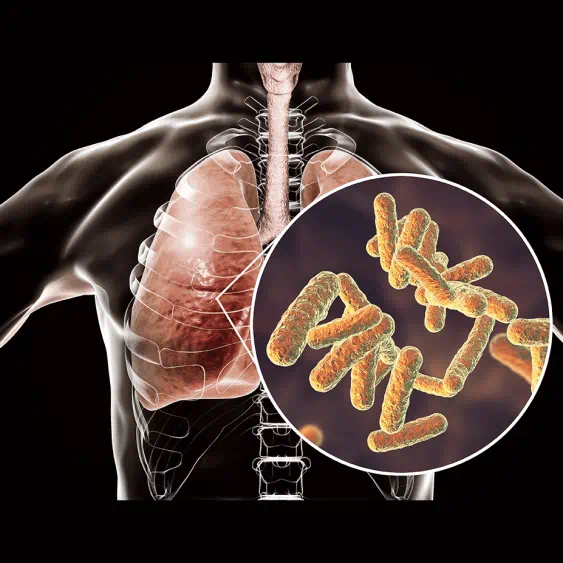EADV 2024: Change in Epidemiology of Dermatophytes
Speaker: Ditte Marie Saunte, Denmark
Dermatophytes, commonly known as ringworm infections, have a global prevalence of up to 25% according to the World Health Organization (WHO). These fungal infections can be transmitted from animals to humans (zoophilic), from the environment to humans (geophilic), or between humans (anthropophilic). Diagnosis has traditionally relied on direct microscopy and culture, but advancements in molecular biology over the last few years have expanded the diagnostic approach to include more sophisticated methods. Presently, dermatophytes are categorized into nine distinct genera, with the most common being Microsporum, Epidermophyton, Trichophyton, and Arthroderma.
The anthropophilic dermatophytes, predominantly represented by the Trichophyton species, are more prevalent compared to the zoophilic variants. The nomenclature and taxonomy of dermatophytes have undergone significant changes, adding complexity to their classification. For example, the Trichophyton mentagrophytes complex, previously classified as a single entity, has been redefined into multiple species over the years. By 2018, there were up to 18 distinct genotypes. This continuous taxonomic evolution also includes the emergence of new species like T. schoenleinii, T. tonsurans, and others. Such changes in classification are crucial in understanding the shifting epidemiology of these fungi, as highlighted by Trichophyton rubrum, which initially originated in Southeast Asia and Africa but spread globally over the 20th century to become the predominant cause of tinea pedis and onychomycosis.
In Denmark, the prevalence of different dermatophyte species has shifted over time. In the early 19th century, Trichophyton violaceum, T. tonsurans, and Microsporum canis were the dominant species causing tinea capitis. Economic changes led to a rise in public bathing, which correlated with increased cases of Trichophyton mentagrophytes. After World War II, Trichophyton rubrum became the most widespread dermatophyte, a pattern that is seen in many regions worldwide. Recent genomic studies, such as one conducted in France, show that the distribution of anthropophilic species has remained stable over the past decade, indicating a potential plateau in the epidemiological shifts of dermatophytes. However, there are still notable regional variations, with species imported from territories like the French West Indies (Martinique and Guadeloupe) influencing local epidemiology.
In patients infected with anthropophilic species of dermatophytes, clinical signs can be quite subtle. For example, in cases of Trichophyton tonsurans infections, typical symptoms like black dots on the scalp may appear as less obvious "blonde dots" in children with lighter hair, along with discreet skin scaling and broken hairs. This subtle presentation can make it easier for infections to spread unnoticed, particularly in communal environments. One such case involved a child who contracted Microsporum audouinii, a fluorescent dermatophyte, after having her hair braided while traveling in Spain. This infection, identified under a Wood’s lamp, highlights the risk of transmission from shared personal items, like hair braiding tools. Outbreaks of dermatophyte infections are not uncommon, as seen in a recent case in Denmark. An index child in a daycare center initiated an outbreak that affected 13% of the children, largely due to shared activities like horse riding, where helmets were not disinfected between uses. The global increase in migration, with nearly 90 million more people migrating since 2000, adds to the complexity of dermatophyte epidemiology.
Additionally, lifestyle changes and increased participation in communal activities like public bathing, yoga, and barefoot walking have further elevated the risk of dermatophyte transmission, especially in regions with high rates of physical activity, such as Scandinavia, where 80% of the population engages in sport at least once a week. Tinea pedis, another form of dermatophyte infection, can also be extremely subtle but highly contagious. It is commonly transmitted in shared public spaces like swimming pools, where studies from Poland have shown that 22% of floor samples tested positive for dermatophytes.
The increasing global prevalence of dermatophytosis can be attributed to various social and environmental factors, including the rising popularity of recycled clothing, changes in behavior, and pet ownership. The trend of purchasing secondhand clothes has gained substantial popularity, particularly among younger populations. For example, data from Denmark’s Red Cross, which operates shops selling secondhand clothing, indicates a notable rise in sales from 2012 to 2018. This growing market presents a potential public health risk, as dermatophyte infections can be transmitted via contaminated clothing. Additionally, pet ownership has been associated with the spread of dermatophyte species, particularly in breeding industries. Data from Germany reveals that nearly 70% of facilities selling pets, whether private or industrial, had dermatophytes present, with species such as Trichophyton benhamiae being prevalent.
Human-associated dermatophytes, such as Trichophyton interdigitale and Trichophyton rubrum, have also been found in these settings, further highlighting the zoonotic transmission risk. The emergence of more contagious and resistant dermatophyte species, such as Trichophyton indotineae, presents an additional challenge. T. indotineae, which likely originated from soil-burrowing animals such as rabbits before being transferred to domestic animals and subsequently to humans, has undergone mutations, resulting in a more highly contagious variant. This species is responsible for widespread, chronic, and recurrent dermatophyte infections. Molecular analysis has revealed that up to 75% of T. indotineae strains carry mutations in the squalene epoxidase gene, leading to terbinafine resistance. This species is now spreading globally, causing significant public health concerns.
Another species of concern is Trichophyton mentagrophytes genotype VII, which is primarily a zoonotic species but has been documented in rare instances of sexual transmission, particularly among men who have sex with men (MSM) and sex workers in Southeast Asia. Infections caused by this species are primarily localized to the genital region and are considered highly transmissible. The rising incidence of infections caused by these emerging dermatophytes indicates a shift in the epidemiology of dermatophytosis, driven by global migration, behavioral changes, and environmental factors.
The over-the-counter (OTC) use of antifungal medications has further complicated the management of dermatophyte infections. In Denmark, up to 30-50% of antifungal sales occur without a prescription, with patients often using these medications inconsistently. Intermittent or suboptimal dosing can promote the development of antifungal resistance, as patients may not complete full treatment courses, increasing the likelihood of resistant strains. Additionally, the combination of antifungals with steroids, often self-prescribed or used incorrectly, can lead to altered clinical presentations of infections, such as tinea incognito and facilitate the spread of the infection.
To summarize, the global rise in dermatophytosis is driven by factors such as recycling, pet ownership, changes in behavior (e.g., increased participation in sports and public bathing), and improper use of antifungal medications. The development of resistant strains, particularly T. indotineae, highlights the necessity for ongoing surveillance and the potential need for new interventions, such as vaccines, to prevent the spread of these infections. Furthermore, public education on sanitation, personal hygiene, and proper use of antifungals is crucial in mitigating the spread of dermatophyte infections. Monitoring for antifungal resistance through case registration programs may help track the epidemiology of resistant dermatophytosis and guide treatment protocols.
33, European Academy of Dermatology and Venereology Congress, 25-28 September 2024, Amsterdam




